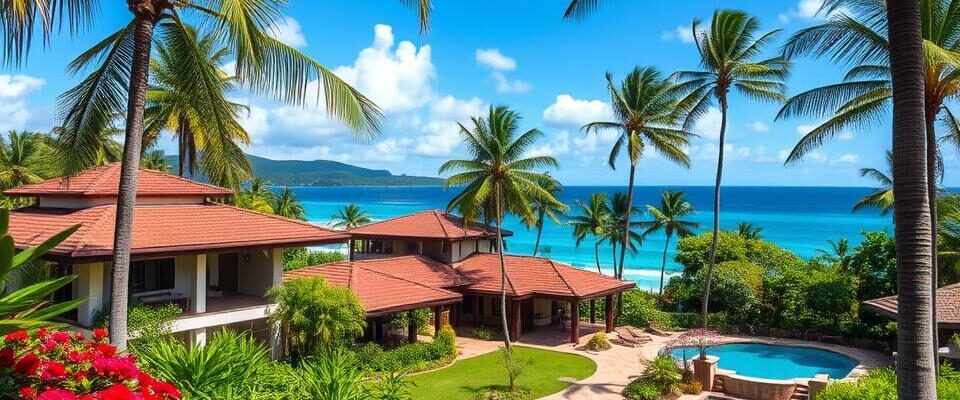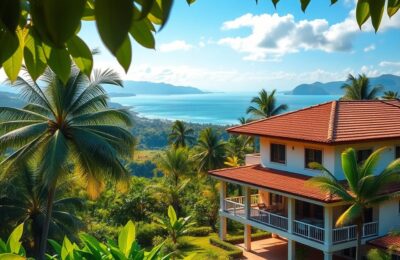Is Costa Rica Third World? Exploring the Facts.
Ever wondered what makes a country “third world”? Many think Costa Rica fits this label, but let’s look closer. Costa Rica shines in Central America for more than just its stunning views. It’s known for its stable politics, growing economy, and improving social life. We’ll explore Costa Rica’s development, from its high Human Development Index to its areas needing work. Join us to see if Costa Rica really fits the “third world country” label.
We’ll dive into Costa Rica’s schools, healthcare, and green efforts. This will give you a full picture of its economy and where it stands worldwide.
Key Takeaways
- Costa Rica’s per capita income is over $4,000, showing a strong economy.
- It ranks 47th on the Human Development Index, showing big social gains.
- Its stable politics and democratic values boost its economy.
- Eco-tourism and green practices are key to its economy.
- Investing in infrastructure helps fight inequality and grow inclusively.
Understanding the Global Economic Classification
To understand Costa Rica’s economic spot, we need to look at how countries like Costa Rica fit into the world economy. The term “third world” has changed a lot since the Cold War days. Back then, it meant countries not in the NATO or Communist areas. Now, it’s more about countries facing economic challenges.
The definition of “Third World” and its historical context
The term “third world” used to mean countries that were seen as poor or underdeveloped. Looking back, we see this label didn’t capture the real economic situations in these places. Today, we talk about developing countries and their unique struggles.
Current global economic classifications and how countries are categorized
Now, countries are sorted out by the United Nations and other groups. They look at things like income, human development, and economic signs. Countries are put into groups like high-income, upper middle-income, lower middle-income, and low-income.
Costa Rica is an upper middle-income country. This shows its economic growth and its place in the world economy. When we look at Costa Rica’s GDP per capita, it’s $18,031 in nominal terms and $28,558 in PPP terms. This shows Costa Rica is a developing nation with growth potential.
Costa Rica’s Political Stability and Democratic Tradition
Costa Rica is known in Latin America for its strong political stability and democratic roots. These traits improve life quality and boost economic growth. Since ending its military in 1948, we’ve focused on education, healthcare, and helping the poor. This has led to a 96% literacy rate and a life expectancy of 79.3 years.
How political stability contributes to economic development
Our stable political scene makes long-term economic planning and investment easier. With a population of about 4.4 million, Costa Rica is a top spot for tourism, bringing in over $1.7 billion a year. This tourism draws in more than 1.7 million visitors from the U.S. and Canada. Our stability also helps in better governance, which improves our infrastructure and public services.
Free and fair elections: A key factor in Costa Rica’s success
Free elections are key to our democratic tradition. Every four years, the President, two Vice-presidents, and 57 Congress members are chosen by the people. This leads to transparent and accountable government. It also helps in creating policies that help the poor, cutting poverty rates from 40% to less than 20% in two decades.
Is Costa Rica Third World? The Development Indicators
Looking at Costa Rica, we see if it’s considered a “Third World” country. We look at development indicators to understand its status. The HDI shows how well the country does in education, healthcare, and living standards.
Analyzing Costa Rica’s Human Development Index (HDI)
Costa Rica has a high HDI score of 0.794, which is impressive. This shows its effort in improving living conditions and human potential. With almost everyone literate and only 8 infant deaths per 1,000 births, Costa Rica has made big strides in social policies.
Poverty levels compared to regional averages
Costa Rica is unique in having a low poverty rate of 12.7% after COVID-19. This is much lower than in other Central American countries. This shows the success of government efforts to keep and improve the economy.
The impact of education and healthcare on socioeconomic status
Investing in education and healthcare has greatly helped Costa Rica’s economy and society. A skilled workforce helps the economy grow and people move up in life. These investments mean people have access to important services and chances, showing Costa Rica is more than just a “Third World” country. For those looking at property, check out GAP Real Estate.
The Role of Environmental Conservation in Economic Growth
Costa Rica is a great example of how taking care of the environment can help the economy grow. We’ve made big steps in making our country better through new environmental policies. By focusing on being sustainable, we’ve built an economy that values eco-friendly actions.
How sustainable practices contribute to Costa Rica’s prosperity
We’ve made a big push for renewable energy, which has cut down on carbon emissions and boosted green tech jobs. About 60% of our land is covered in forests, thanks to our conservation efforts. The Payments for Ecosystem Services (PES) program has helped restore almost a million hectares of forest, stopping the deforestation of the past.
The significance of eco-tourism and renewable energy initiatives
Eco-tourism has taken off, drawing in visitors who want to see our unique wildlife, home to 6% of the world’s species. The Certification for Sustainable Tourism (CST) encourages the tourism industry to be more eco-friendly. Our focus on clean energy and sustainable actions links environmental care with economic strength. By protecting 25% of our land and 30% of our oceans, we keep our ecosystems safe and set the stage for lasting wealth.
Costa Rica is leading the way in sustainable development, showing how to grow the economy while caring for nature. Our success in eco-tourism, renewable energy, and strong environmental policies makes us a model for a sustainable future. For more on how real estate fits into this new economic picture, check out Gap Real Estate’s website.
Costa Rica’s Economic Development Strategies and Challenges
Costa Rica’s economy is shaped by key strategies. These include big investments in infrastructure and social welfare. About 20% of our GDP goes to social spending. This money helps everyone get healthcare, education, and clean water.
Investments in infrastructure and social welfare programs
We’re working on modernizing our transport and boosting connectivity. These efforts make doing business easier and help trade grow. Social programs also play a big role, aiming to fight poverty and make sure everyone can take part in the economy.
Addressing inequality and the inclusivity of economic growth
Even with progress, we still face big challenges like inequality. Groups like Afro-descendants and Indigenous people face economic gaps. The pandemic made poverty worse, but we’re working hard to make sure growth helps everyone.
Looking at Costa Rica’s real estate market gives us clues about our economic strategies. It shows how open and exclusive listings affect different sectors. For more on this, check out this guide on listing options.
Conclusion
Costa Rica is not just an upper middle-income country but also a model for others. We focus on political stability, protecting the environment, and social welfare. These efforts have put us on a special path to growth.
Our literacy rate is an impressive 98%, and our Human Development Index is 0.794. This shows we meet or beat “First World” standards. It’s clear we’re not just developing; we’re already there.
Looking at our education, healthcare, and quality of life, we’re ahead in the region. Our infant mortality rate is much lower than the average, showing our focus on health. Life expectancy is 80 years, five years more than the average, highlighting our aim for a better life for everyone.
Costa Rica is getting a higher ranking globally thanks to our efforts in being inclusive and sustainable. We’re a model for others facing globalization and environmental issues. Being seen as an upper middle-income country shows our strong focus on social and economic success. This moves us far from the old idea of Third World countries.
Source Links
- https://www.worldbank.org/en/country/costarica/overview
- https://www.anywhere.com/costa-rica/travel-guide/sustainable-development
- https://ticotimes.net/2023/03/23/costa-rica-a-mighty-voice-from-a-tiny-nation
- https://www.heritage.org/index/pages/country-pages/costa-rica
- https://en.wikipedia.org/wiki/Economy_of_Costa_Rica
- https://www.cia.gov/the-world-factbook/countries/costa-rica/
- http://www.costarica-embassy.org/index.php?q=node/19
- https://www.britannica.com/place/Costa-Rica/Transition-to-democracy
- https://news.co.cr/costa-ricas-third-world-celebrity-status/10413/
- https://www.weeklycrawler.com/local-stories/is-costa-rica-a-third-world-country/
- https://revista.drclas.harvard.edu/pura-vida-pura-sustainability-costa-ricas-path-to-a-green-future/
- https://www.conservation.org/docs/default-source/policy-exchange-platform-documents/why-costa-rica.pdf?sfvrsn=c6395148_24
- https://www.mapfreglobalrisks.com/en/risks-insurance-management/article/costa-rica-economic-trade-outlook/
- https://www.gov.uk/government/publications/overseas-business-risk-costa-rica/overseas-business-risk-costa-rica
- https://www.gaprealestate.com/is-costa-rica-third-world/
- https://www.gaprealestate.com/is-costa-rica-third-world-2/
- https://www.americanambassadors.org/publications/ambassadors-review/spring-2011/striving-for-developed-status-costa-rica-and-the-united-states-21st-century-engagement




